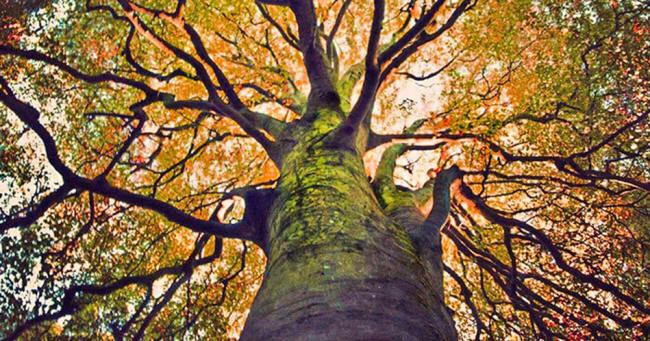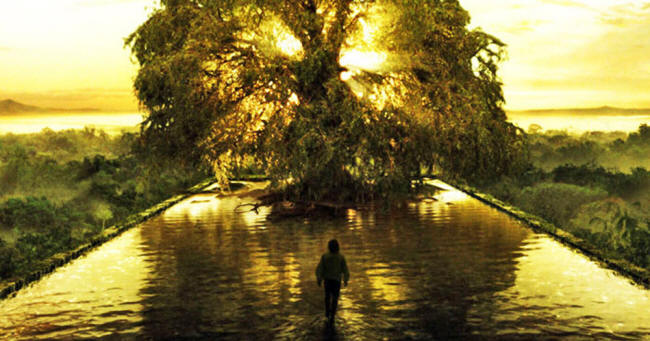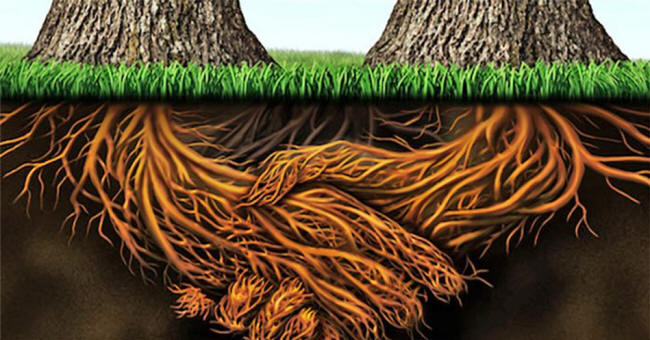1. Pando, or the
Trembling Giant
Pando is a grove of
approximately 47,000 quaking aspen trees in Utah.
This remarkable group
of trees is considered a single organism, because all the trees
share a single root system and each tree is genetically
identical. New trees are produced by sprouting from the massive
parent root system.
It is estimated that
Pando has been alive at least 80,000 years, making it one of the
oldest living things on the planet.
Consider that when this tree colony first sprouted from the
ground, humans would still not arrive on North America for
another 50,000 years.
In some parts of the
planet, Neanderthal people were still 30,000 years from going
extinct.
The 106-acre grove of
trees has seen unimaginable changes, living through the ice age
and at times being completely burnt down above ground, but
surviving and renewing itself below ground.
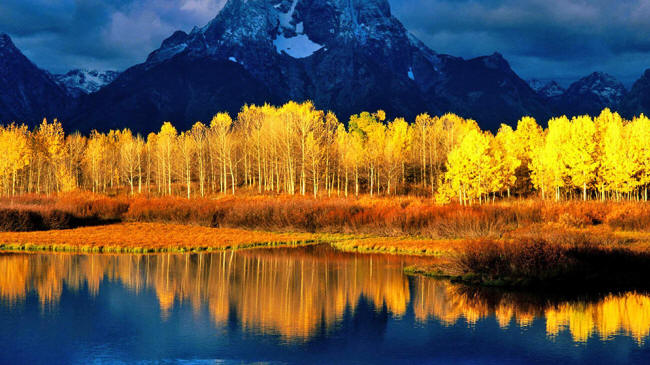
The stunning pando trees.
2. More
than 25% of Western pharmaceuticals originate in rainforest
plants.
There are 3,000 plants currently recognized by the U.S. National
Cancer Institute as active against cancer cells, and 70% of
these come from rainforests.
Perhaps this is why
the shamans of the Amazon
believe that for every human ailment, the rainforest holds a
cure. And yet, only 1% of all rainforest plants have actually
been studied (by modern science) for medicinal purposes.
Imagine how many
valuable healing plants are destroyed or even made extinct as
the rainforests are cleared at a rate of 1.5 acres (0.6
hectares) per second.
Due to rainforest
destruction, the Earth loses approximately 137 species of
plants, animals, and insects per day.
3. Not all
rainforests are in tropical zones.
The
Pacific Temperate Rainforest is
the largest remaining coastal temperate rainforest on Earth.
It is situated along
the Pacific Coast and stretches from Northern California up to
the Prince William Sound in Alaska. It is characterized by high
amounts of rainfall, more than 10 feet per year in some areas;
and in many places the forest grows right up to the shoreline.
It includes the
Great Bear Rainforest in
western Canada, home to the
Spirit Bear, a rare subspecies
of black bear with a white coat.
A National Geographic article about the Great Bear
Rainforest
states:
"Grizzlies, black
bears, wolves, wolverines, humpback whales, and orcas thrive
along a coast that has been home to First Nations like the
Gitga'at for hundreds of generations.
It's a spooky,
wild, mysterious place: There are wolves here that fish.
Deer that swim. Western red cedar trees that have stood a
thousand years or more.
And a black bear
that is white."
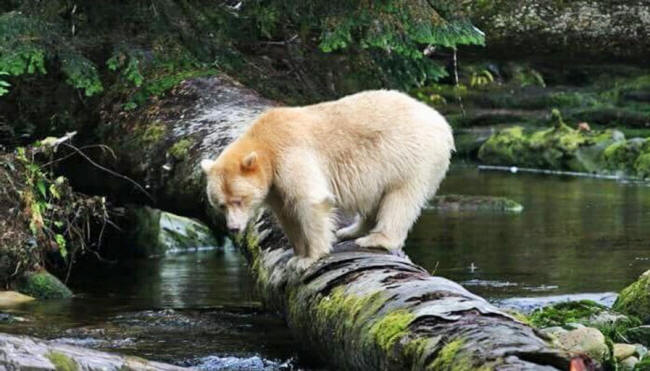
Spirit bear
in
the Great Bear Rainforest.
4. In many
cultures, it is believed that hugging a tree releases negative
energy from the human body.
Many people believe that trees, like humans and all living
things, possess an energetic vibration and an aura.
Because trees'
vibrations are slower and deeply connected to the Earth through
their roots, connecting with trees can help us to feel safe,
secure, and stable.
Most would agree that
a walk in the forest or even simply gazing at a tree provides a
deep feeling of peace and serenity, and can be emotionally and
psychologically healing.
5. People in
Malaysia maintain a very intimate relationship with trees.
Among the
Sng'oi indigenous people, a
person and a tree can belong together, and this relationship is
maintained for life.
When a person belongs
with a tree, they also belong with its offspring:
any trees that
grow from the seeds of the first tree, no matter how far
they become scattered.
Also in Malaysia,
trees are planted around houses so closely that the walls of the
homes may give way to the growing roots.
In the graveyards,
the trees are allowed to take root into graves, and it is said
that the trees whisper prayers to the creator asking for the
forgiveness of sins of those buried in that place.
These practices speak
to an ancient knowing that people and trees are intimately
interconnected throughout life and forever in history.
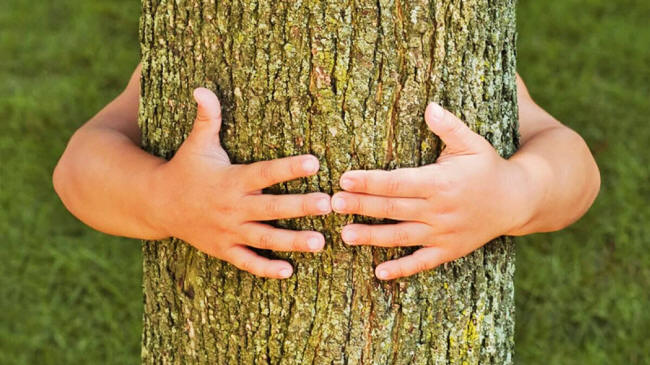
Hugging a tree
can
release negative energy from the body.
6. Trees are
literally saving our lives every day.
A July 2014 study showed that trees prevent $6.8 billion per
year in averted health costs annually, just in the United
States.
It is estimated that
by removing massive amounts of air pollution through their
leaves, trees,
"prevented 850
human deaths and 670,000 cases of acute respiratory symptoms
in 2010 alone."
Studies show that
trees in urban areas are removing 4 to 8 times the pollution
from the air as their equivalents in rural areas.
This highlights the
importance of planting trees everywhere we possibly can, and
especially in highly-populated areas where pollution is highest.
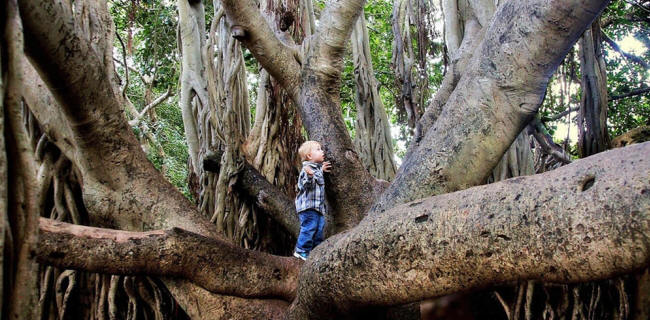
Trees are
an important part of our lives.
7. Trees in
a forest communicate with one another through underground
networks.
Trees are connected below the ground by
mycorrhizal fungi, which live
symbiotically with the roots of the trees.
Both the trees and
the fungi need each other to survive. But that's not all.
Because the fungi essentially connect the roots of one tree to
another, the trees can use the fungi to pass nutrients to one
another.
So, for example, in
winter when aspens are weaker, nearby conifers were found to
pass additional nutrients to the aspens to keep them healthy.
Similarly, older,
more-established trees pass nutrients through the fungi to young
seedlings which need to grow larger toward the sun's light in
order to survive.
The largest, oldest
trees in the forest serve as the hub because they possess and
produce large amounts of resources, and their massive roots
spread out in all directions.
When one tree is attacked by insects, it distributes pheromonal
chemicals through the fungi beneath the soil to warn nearby
trees of a possible attack so the other trees can prepare by
changing the chemical makeup of their leaves.
The
fungal networks also strengthen
the immune systems of the trees.
So not only do
different species of trees help each other out in the forest,
but fungi and even other types of plants join the underground
network and communicate together to support the health of the
entire ecosystem.
There is documented
proof that when a tree is dying, it releases its resources into
the root networks so that its neighbors can benefit from the
nourishment that it will no longer need - it is making the
ultimate sacrifice.


